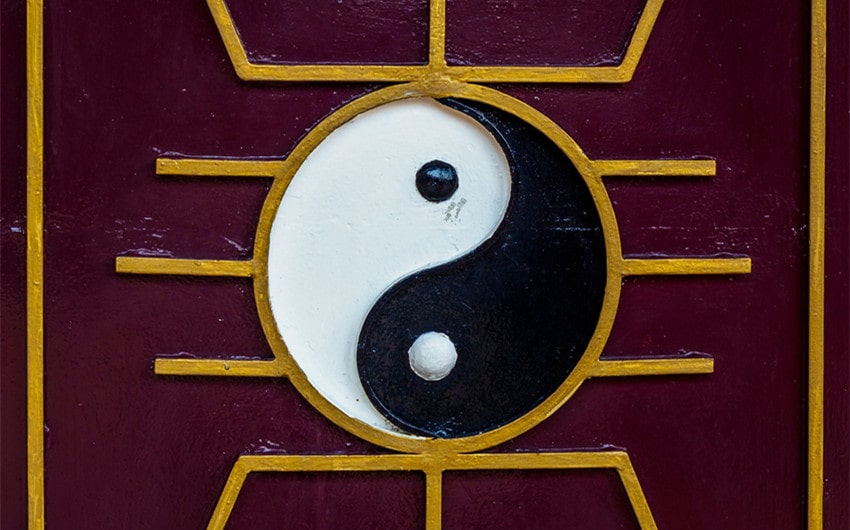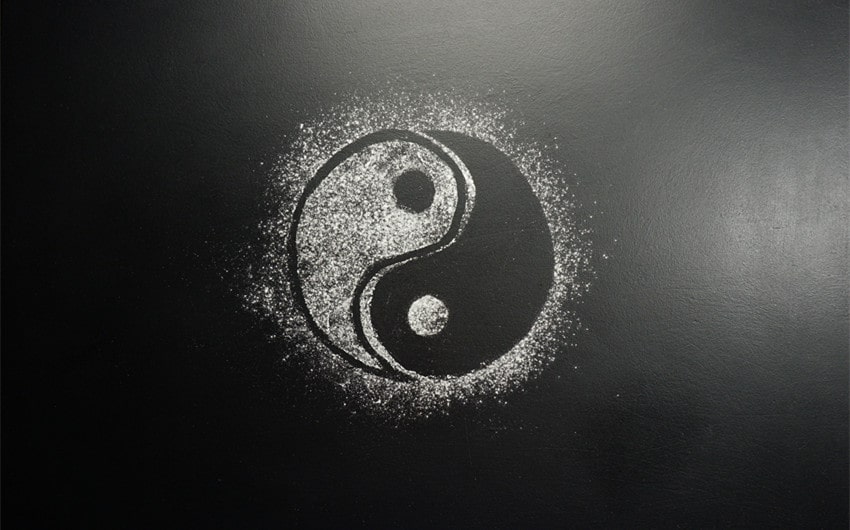Applying the Yin-Yang Meaning for Mutual Growth and Support
Friendships are often built on the balance of different personalities, and the concept of Yin-Yang meaning in friendship offers a unique perspective on this dynamic. Rooted in ancient Chinese philosophy, Yin and Yang represent opposing but complementary forces, where each enhances the other.
In friendships, this balance can create harmony, with one friend providing calmness and support while the other brings energy and excitement. In this article, we’ll explore how the Yin-Yang philosophy applies to friendships and how embracing these differences can lead to deeper, more meaningful connections.
What is Yin and Yang?
Yin and Yang are central concepts in traditional Chinese philosophy, representing the idea of balance and duality in the universe. The philosophy is rooted in the belief that everything in life consists of opposing but complementary forces, and harmony is achieved when these forces are balanced. Neither Yin nor Yang is considered “better” than the other; instead, they work together to create a whole.
The Meaning of Yin and Yang
- Yin: Yin is associated with qualities like passivity, calmness, and receptivity. It represents the softer, more introspective side of life. Yin is often linked to darkness, the moon, water, and night—things that are still, cool, or quiet. In human behavior, Yin is seen in traits like patience, nurturing, and emotional sensitivity.
- Yang: Yang, on the other hand, is linked to activity, energy, and assertiveness. It represents brightness, heat, and action—qualities that move things forward. Yang is often associated with the sun, fire, and daytime. In people, Yang can be seen in traits like ambition, drive, and decisiveness.
The relationship between Yin and Yang is not static. They are constantly interacting, influencing one another, and creating change. For example, just as day gives way to night, Yang can give way to Yin, and vice versa. This dynamic balance is seen as essential for maintaining harmony in all areas of life, from nature to personal relationships.
The Symbol of Yin and Yang
The Yin-Yang symbol, called the Taijitu, visually represents this balance. The circle is divided into two halves—one black (Yin) and one white (Yang)—but each half contains a dot of the opposite color, showing that within Yin, there is Yang, and within Yang, there is Yin. This suggests that nothing is purely one or the other; even in moments of stillness (Yin), there can be flashes of energy (Yang), and in action (Yang), there can be moments of calm (Yin).
How Yin and Yang Relate to Friendship
In relationships, including friendships, the balance between Yin and Yang can be a useful metaphor for understanding how people with different traits and personalities can complement each other. Just as Yin and Yang are opposites but work together to create balance, friends with different characteristics can enhance each other’s strengths and compensate for weaknesses. For example, a friend with a more Yang-driven personality might inspire action and excitement, while a more Yin-focused friend might bring a sense of calm and stability to the relationship.
Yin and Yang as a Metaphor for Friendship

The concept of Yin and Yang provides a powerful metaphor for understanding friendships. In every relationship, individuals bring different qualities, strengths, and even weaknesses. The idea of Yin and Yang suggests that these differences are not only natural but essential for creating balance and harmony in a friendship. Just as Yin and Yang are complementary forces in the universe, friends with contrasting personalities or traits can support each other and form a balanced, dynamic relationship.
1. Complementary Personalities in Friendship
Friendships often thrive when there’s a balance of complementary traits between two people. One friend might be more calm and introspective (Yin), while the other might be more energetic and outgoing (Yang). These differences allow each person to contribute something unique to the relationship, enriching the overall dynamic. Rather than seeing these traits as opposites that clash, the Yin-Yang metaphor encourages us to view them as qualities that enhance one another.
For example:
- Yin Friend: A Yin-type friend might be more patient, thoughtful, and supportive. This person brings a sense of calm, offering emotional stability and a listening ear. They might prefer quiet activities, like long conversations or peaceful walks, and can be a source of comfort during stressful times.
- Yang Friend: A Yang-type friend, on the other hand, might be more action-oriented, outgoing, and adventurous. This person brings energy and excitement to the friendship, encouraging their Yin friend to try new experiences or engage in more social activities. They might be the one to plan spontaneous trips, social outings, or take on new challenges.
Together, these contrasting qualities can create a well-rounded friendship where each person balances the other. The Yin friend can help ground the Yang friend during moments of high energy or stress, while the Yang friend can push the Yin friend out of their comfort zone, introducing them to new opportunities and experiences.
Examples of Yin and Yang Traits in Friends
Friendships are often built on the balance of Yin and Yang traits. Here are a few common examples of how these complementary characteristics can manifest in friendships:
-
- Introvert vs. Extrovert: One friend might prefer quieter, one-on-one interactions (Yin), while the other thrives in social settings with large groups of people (Yang). Together, they can balance each other by finding activities that suit both their preferences, like attending a party and then unwinding with a quiet dinner.
- Listener vs. Talker: A Yin friend may naturally be more of a listener, offering thoughtful advice and emotional support, while a Yang friend might be the talker, sharing stories, ideas, and leading conversations. This balance ensures both friends feel heard and understood in the relationship.
- Planner vs. Spontaneous: The Yin friend might prefer careful planning and thoughtful decision-making, while the Yang friend enjoys being spontaneous and diving into activities without overthinking. Together, they create a friendship that’s both stable and exciting, with a balance of structure and adventure.
2. The Power of Balance in Friendships
The balance between Yin and Yang traits is what makes friendships dynamic and fulfilling. When friends with different strengths come together, they can fill in each other’s gaps, offering support where the other might be lacking. For example, a Yin friend’s calming presence can help ease their Yang friend’s stress during a hectic period, while the Yang friend can inspire the Yin friend to embrace new challenges they might otherwise avoid.
The key to the Yin-Yang metaphor in friendship is recognizing that both traits are equally valuable. Neither Yin nor Yang is better; instead, they complement one another, creating a harmonious relationship. This dynamic is not about competition or trying to change the other person, but about appreciating the unique qualities each friend brings to the relationship.
3. Flexibility in Yin-Yang Friendships
It’s important to remember that the roles of Yin and Yang in friendships are not fixed. Over time, or depending on the situation, friends may switch between Yin and Yang roles. For example, the typically energetic Yang friend may need comfort and patience during a difficult time, taking on more Yin qualities, while the usually calm Yin friend may need to step up and take charge, embracing more Yang traits.
This flexibility allows friendships to adapt and grow, as friends naturally adjust to each other’s needs. This fluidity is central to the Yin-Yang concept, which emphasizes that balance is not rigid but ever-changing, depending on circumstances.
Applying Yin and Yang to Strengthen Friendships

The philosophy of Yin and Yang offers valuable insights into how we can build stronger, more balanced friendships by embracing complementary traits and respecting differences. When applied to friendships, Yin and Yang highlight the importance of harmony, mutual growth, and self-awareness. Instead of viewing differences as obstacles, recognizing how Yin and Yang function together can help foster deeper connections. Below are practical ways to apply this ancient philosophy to strengthen friendships.
1. Embrace Complementary Strengths
One of the most powerful aspects of Yin and Yang in friendship is the idea that opposites can complement each other. Friends often have different strengths and personalities, which can enhance the relationship if both parties recognize and appreciate these differences. Instead of seeing traits like introversion (Yin) or extroversion (Yang) as conflicting, view them as opportunities to balance one another.
How to apply this:
- Recognize your friend’s strengths: If your friend is more organized and practical (Yang), and you tend to be more reflective or creative (Yin), acknowledge how these differences benefit the friendship. Use these complementary traits to collaborate and support one another.
- Appreciate what each person brings: For example, if you’re more reserved (Yin) and your friend is more outgoing (Yang), let their energy inspire you to try new things, while your calming presence can help them slow down and reflect when necessary.
- Support each other’s weaknesses: If one friend struggles with something, the other can step in to fill that gap. For instance, a more introverted person may need help initiating social plans, while the more extroverted friend can step up to organize fun outings.
By focusing on how different traits can work together, you can create a more dynamic, balanced friendship that plays to both people’s strengths.
2. Practice Mutual Growth
The Yin and Yang dynamic is not only about balance but also about growth. In friendships, this means supporting each other’s personal development and encouraging each other to step out of comfort zones. Yin and Yang show that both calm reflection and active change are necessary for progress, and friends can help each other grow in these areas.
How to apply this:
- Encourage personal development: If you notice your friend holding back because of fear or uncertainty, offer gentle encouragement. For example, if your Yin friend tends to avoid risks, you, as the more action-oriented Yang friend, can motivate them to try new things or pursue their goals.
- Learn from each other: Yin and Yang teach us that no one has all the answers. A friend who is more reflective (Yin) may teach you the value of patience and introspection, while a more dynamic friend (Yang) can show you the benefits of taking action and being spontaneous.
- Balance each other’s energy: If one friend is experiencing high stress or anxiety, the calmer, more reflective friend (Yin) can offer perspective and peace. Conversely, if one friend feels stagnant or unmotivated, the more energetic friend (Yang) can offer encouragement to take action or make a change.
Mutual growth in friendships requires recognizing how each friend’s unique traits can inspire personal development in the other. This creates a friendship that’s not only balanced but also transformative.
3. Encourage Self-Awareness and Understanding
Understanding your own traits, as well as those of your friend, is key to applying the Yin-Yang dynamic to friendships. Self-awareness allows you to see where you lean more toward Yin or Yang and how that affects your relationship. This understanding fosters better communication and empathy, which are essential for maintaining strong friendships.
How to apply this:
- Reflect on your own behavior: Are you more Yin (passive, calm) or Yang (active, driven) in most situations? By understanding your natural tendencies, you can better manage how you react in your friendships.
- Be aware of your friend’s needs: Just as you reflect on your own traits, pay attention to what your friend might need from you. If they’re feeling overwhelmed, consider how you can be more Yin (nurturing and calming) in your interactions. Alternatively, if they’re stuck or feeling unmotivated, adopt more Yang qualities to help energize and support them.
- Communicate openly: If you feel that the balance in the friendship is off—perhaps one person is giving more than the other or dominating the relationship—discuss it openly. A friendship grounded in Yin and Yang allows for healthy communication and the ability to shift roles when needed.
Self-awareness in friendships creates space for understanding each other’s needs and adapting your behavior to maintain harmony in the relationship. This is a vital part of ensuring the Yin-Yang balance remains intact.
4. Adapt to Changing Dynamics
One of the key lessons of Yin and Yang is that balance is not static; it’s constantly shifting. In friendships, this means being flexible and adapting to changing roles as circumstances evolve. Sometimes, one friend might need to lean more heavily into their Yin traits (supportive, patient) while the other takes on more Yang traits (assertive, action-driven), and vice versa. Healthy friendships allow for this fluidity.
How to apply this:
- Recognize when to shift roles: If your usually energetic Yang friend is going through a tough time, you may need to take on more of the supportive Yin role to help them through it. Conversely, if you’re typically the calming force but notice your friend needs a boost of energy, be ready to switch gears and adopt more Yang characteristics to encourage them.
- Be adaptable: Flexibility is key in maintaining balance in friendships. Understand that needs will change over time, and it’s important to adjust your approach as the friendship evolves.
- Balance is a two-way street: A friendship grounded in Yin and Yang is not one-sided. Both friends should feel that they are giving and receiving in equal measure, even if the form that giving and receiving takes changes over time.
By being adaptable and recognizing when it’s time to shift between Yin and Yang roles, you can keep the friendship dynamic and responsive to the needs of both individuals.







